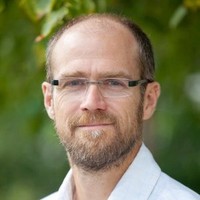The Language Documentation & Conservation program at the University of Hawai‘i at Mānoa provides advanced training in the theory, methods and practices of Documentary Linguistics. The academic program is a key part of a larger effort which includes:
- the journal Langauge Documentation & Conservation, a peer-reviewed open-access forum for discussing issues of relevance to the discipline
- the International Conference on Language Documentation & Conservation, a biannual gathering of Indigenous language advocates and practitioners
- the Language Documentation Training Center, a student-led initiative to train community members of underdocumented languages in the methods of documentary linguistics
Students in the LD&C program receiving training in both the standard methods of linguistic analysis as well as the ethics and protocols surrounding community-based collaborative research. Through both classroom and field-based experiences, students gain skills in the use of modern recording techniques, annotation methods, and analysis and archiving tools.
What is Documentary Linguistics?
Documentary linguistics is concerned with the creation of an enduring, permanent record of language. The centerpiece of this work is the representation of naturally occurring speech using annotated audio and video recordings. In some sense, documentary linguistics seeks to create a record of language which will allow future researchers to investigate a language long after its last speakers have passed on.
More than half of the world’s 7000 or so languages are currently endangered. These languages are no longer being actively passed on from one generation to the next, and unless this trend is reversed, knowledge of these languages will disappear with their last speakers. There will be no one around to answer the question, “How do you say X in your language?” There will be no one around to give grammaticality judgements, to say whether or not it is permissible to form object relative clauses of the form ‘the book that you read.’ The records created by documentary linguistics will allow us to continue to ask these questions in the future—even if speakers are not around to answer them.
You might be wondering, why not just ask all of these questions now and be done with it? Then we wouldn’t need to go to all the trouble of creating a permanent record of language (and we wouldn’t need this book). The problem is that such an approach would only allow us to ask the questions that we know enough to ask now. But future linguists will have new concerns, new theories, new questions. They will need access to a record of languages which allows them to ask those questions. This is the fundamental challenge of documentary linguistics: creating a record of language which isn’t limited by the questions or theoretical fashions of the day but will instead allow future researchers to answers questions which we haven’t yet thought to ask.
Language Maintenance and Conservation
Language conservation refers to efforts to reverse the process of language shift that is inherent to endangered languages. Some people prefer the term language revitalization or language maintenance, but the term conservation is intended as a cover term for all of this kind of work. At one extreme this may even involve language reclamation or revival, efforts to create new speakers of a language whose last speakers have already passed away.
Language conservation is an integral part of documentary linguistics, and it is an integral part of the LD&C program at Hawai‘i. Most documentation work takes place within endangered language communities, and the continuing threat of language loss hangs over many documentation projects. Indeed, it is not uncommon for some of the more eloquent and skilled speakers of an endangered language to pass away during the course of a documentation project. In this context it is difficult to ignore the need for efforts to reverse ongoing language shift. This may even be the primary reason for speakers to become involved with language documentation. While not every individual researcher will have strengths in both language documentation and conservation, no documentation project can completely ignore conservation issues. By the same turn, language conservation programs cannot ignore documentation, as the materials created by language documentation are critical to conservation efforts, and the record created by documentary linguistics can serve as a resource for (re)learning languages. For many endangered languages, few if any reference materials are available for language learners, and what resources do exist are primarily descriptive in nature.
To find out more about the LD&C academic program at the University of Hawai‘i at Mānoa, see the department website or feel free to contact me directly.
